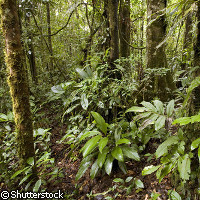New species of yeast found in Amazonian jungle
A new species of yeast called Candida carvajalis has been discovered in the Amazonian jungle. C. carvajalis is described in a paper published online in the journal FEMS Yeast Research by scientists from the Institute of Food Research in the UK and the Pontificia Universidad Catolica del Ecuador. Yeasts have been used for baking and in the fermentation of alcoholic drinks for thousands of years. At the moment there are about 1,500 known species of yeast; Saccharomyces cerevisiae, the species used in baking and fermentation, is the most well known. Even small genetic differences in different types of yeast could have a huge economic impact, not only in the food and drink industries, but in the area of biofuels. Yeast is currently big business because of the growing need to produce ethanol for biofuels. Research is now being carried out on how different strains of genetically engineered yeast could be used for ethanol production. This would reduce the need to use cropland for biofuels. Using crops such as corn for biofuel production is highly controversial because it is one of the causes of the rise of food prices, as land traditionally used for food is converted to biofuel production. Preserving and recording our shrinking biodiversity is another crucial issue. Dr Steve James of the Institute for Food Research stressed, 'It's a race against time. We know that massive loss of species diversity is occurring worldwide. Our colleagues in Ecuador appreciate the importance of collecting, characterising and subsequently preserving what remains.' James Carvajal, head of the Ecuadorian team, whose father Enrique discovered the yeast while oil prospecting and in whose honour the news species is named, added, 'The four different climatic regions of Ecuador and fermentations performed by ancient indigenous populations make Ecuador a promising country in which to find novel yeast species.' Enrique Carvajal discovered the new species of yeast from rotten wood and fallen leaves that he collected from the Orellana province in the central Amazonian region of Ecuador. Dr Ian Roberts, curator of the National Collection of Yeast Cultures at the Institute of Food Research, commented, 'Our collaboration with the team in Ecuador is of inestimable value. Together, we aim to ensure that irreplaceable biodiversity is preserved and [is] available to support innovation in food, beverage and healthcare. It is already clear that our joint collection will become increasingly valuable to chemical engineers seeking novel yeast properties to confer advantages both in second-generation biofuel production and in a range of other industrial fermentations.'
Countries
Ecuador, United Kingdom



